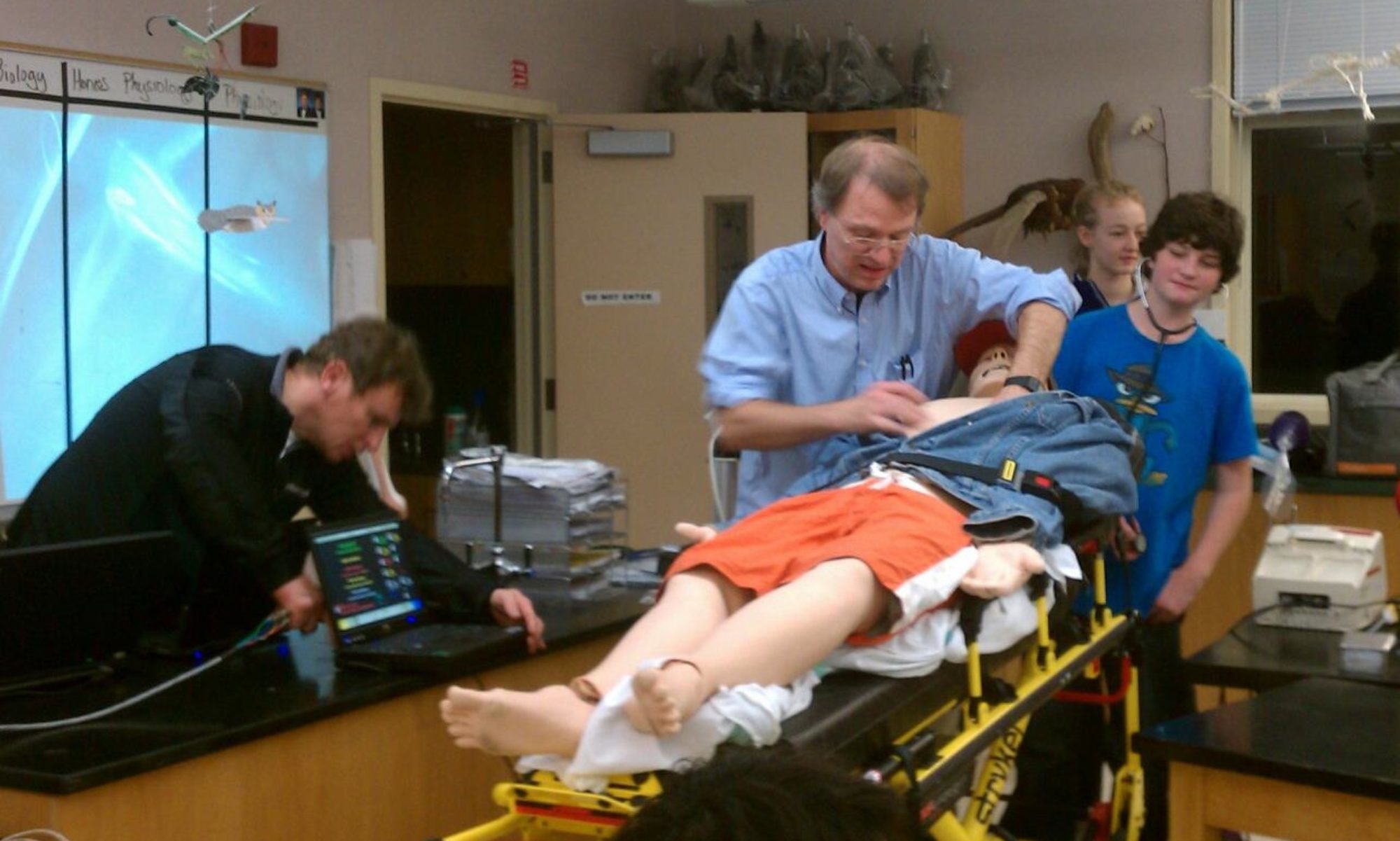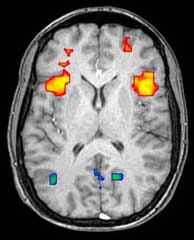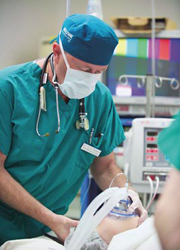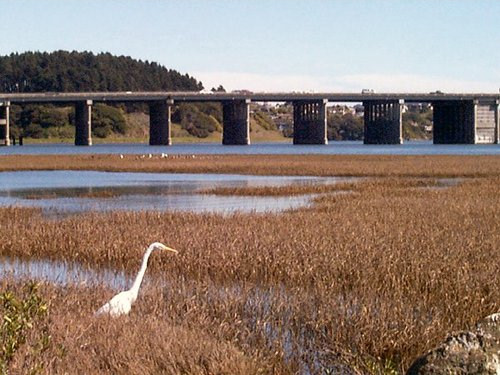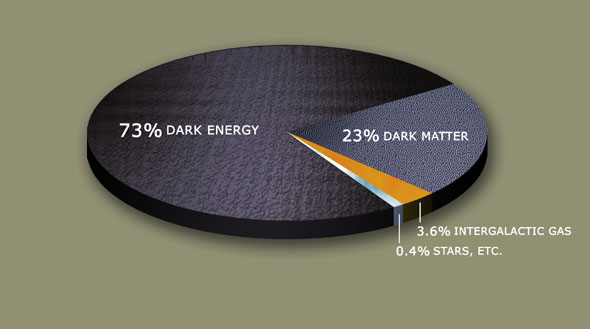An anesthesiologist at work.
Dr. Art Wallace is a professor of anesthesiology and perioperative care at UCSF, and an attending anesthesiologist at the San Francisco Veterans Affairs Hospital. He is a man of sharp wit, wry humor, and countless analogies to explain the complexities of anesthesia. He was also kind enough to answer a couple of questions for me over the phone.
What exactly is anesthesiology?
An anesthesiologist makes patients become compatible with surgery. They put patients in a state in which they can undergo painful operations and surgeries. Anesthesia requires the use of several powerful, lethal drugs and is extremely dangerous. Its cultivation over the last 150 years has been geared toward making it more effective, more efficient, and thus more safe.
Anesthesiology has helped reduce the risk of surgical care tremendously. Around the 1950s, the ratio of fatal to nonfatal procedures was 1:200 to 1:1500. The present day ratio of 1:100000 to 1:1000000 looks multitudes more reassuring.
In particular, Dr. Wallace has researched ways to reduce stress during surgery.
What’s the difference between stress and pain?
Pain is a sensory experience and can cause stress, such as increased heart rate or blood pressure. Stress is the physical effects of the strain, which can ramp up to heart attacks and strokes. While a person can be unconscious and not experience pain, stress can still occur.
What can anesthesiologists do?
Anesthesiologists can manipulate what a patient experiences under surgery. Consciousness, feelings of pain, autonomic responses, movement, and even memory can all be suppressed by an anesthesiologist during surgery. A patient could not remember the operation at all, or, during the operation, “feel pain but not care.”
The range of parts an anesthesiologist can turn off allows more people access to safe surgery. People terrified of surgery can choose to be unconscious or not remember any of it at all. Mortality rates of women in childbirth have lessened from a ratio of one death in ten survivals to one death in ten thousand, or even one death in one hundred thousand. As Dr. Wallace put it, anesthesiology serves a “nice, noble cause.”
A venn diagram on some uses of anesthetics.
How do you decide what to give a patient?
There are typically two main components to deciding what to dose a patient. The first are the patients themselves. Are they terrified? Are they at risk of heart attack or stroke? Do they have a cardiovascular or lung disease that drugs could possibly irritate? Depending on the attitude and the physical condition of the patient undergoing surgery, different doses with different effects might be prudent.
The second component is the type of operation. Depending on the severity of the injury and the operation needed to fix it, more or less anesthetics are required. “What I’m going to give for a broken finger, versus a heart transplant, will be a lot different,” Dr. Wallace explained.
What sorts of fields come into play in anesthesiology?
The general knowledge of medicine that comes from med school, residencies and internships are all pre-requisites for any practicing doctor. Anesthesiologists need an understanding of physiology and cardiology, as well as the ability to interact with surgeons. Fixing the monitors that check on the patient’s condition—in other words, some engineering—is also needed.
What are monitors and how do they help anesthesiologists?
Monitors are the screens connected to machines that watch a patient’s physical condition, including things like blood pressure, cardiac output, isofluorine concentration, EKG, etcetera. The ability of a computer to constantly monitor a patient’s condition when the patient is unconscious and unable to give indications of discomfort is incredibly useful and critical to the safety of patients undergoing surgery.
What sorts of problems are being worked on by anesthesiologists today?
Drugs still need to be developed to better prevent heart attacks and strokes for patients. In general, anesthesiology is constantly working towards safety. Safer drugs, more efficient methods, and less room for error means less risk in surgery.
How would you go about becoming an anesthesiologist?
The usual track is four years in college with any major. Afterwards is medical school, where the pool of majors narrow down to the general field of medical science. Then there’s clerkships, where students rotate through a multitude of different medical professions, usually a month or two in each. Afterwards is an internship, where young doctors hone the glorious ability to write prescriptions. Throughout all of these stages, the medical student is narrowing down their field of study, until they can go through their residency, where real hands-on experience and learning begins, and specific fields are explored. Afterwards, the newly minted doctor has enough experience to begin practicing.
How do robots come into the whole thing?
The robots that are going to be the topic of this Wednesday’s seminar are new technological developments used for training young doctors. Originally, beginning doctors spent ridiculous hours—maybe even 110 hours out of 160 in a week—writing prescriptions and deducing problems. The sheer amount of work tired the doctors and caused them to make errors on very real prescriptions, for very real patients. Instead, robotic patients are being developed for doctors to practice on. Like a simulation, the robot patients can simulate everyday illnesses to rare diseases, or specific instances that seldom arise. All of these situations prepare doctors for as many different occurrences in their career. “You wouldn’t want a pilot to crash on the job,” Dr. Wallace explained, “and you don’t want a doctor to mess up on a real patient.”
How did you become interested in anesthesiology?
Already interested in becoming a doctor since his mother’s death in middle school, Dr. Wallace pursued the sciences straight into college (though he preferred the challenges of physics over the memorization of biology in middle school). He majored in electrical engineering but, after a summer job doing surgery, he became interested in medical school. Initially a surgeon, Dr. Wallace became an anesthesiologist later in his career.
—
Then we got talking about some wacky things. Take Michael Jackson, for instance. His doctor had prescribed him drugs more under the jurisdiction of an anesthesiologist. According to Dr. Wallace, had Michael Jackson hired a trained anesthesiologist instead, he might still be alive.
Exactly how lethal are those anesthetics, anyways? Narcotics more than a hundred times more potent than heroin, barbiturates that send patients to sleep, drugs that stop the heart, invoke paralysis, stop nerve transmission, and stop brain function, are all used by anesthesiologists. “All of them can be fatal,” confirmed Dr. Wallace.
Any jokes about rising to evil overlord-ship dissolve in the face of Dr. Wallace’s actual occupation. Not only does anesthesiology help terrified patients undergo necessary surgeries, but Dr. Wallace works as an anesthesiologist at the Veterans Affairs Hospital in San Francisco. At the VA, surgery is free. Veterans can access the procedures and the treatment they need, easily. They do well under the care of surgeons, doctors, and anesthesiologists like Dr. Wallace. Nothing could be farther from nefarious deeds.
—
—
Sandra Ning
